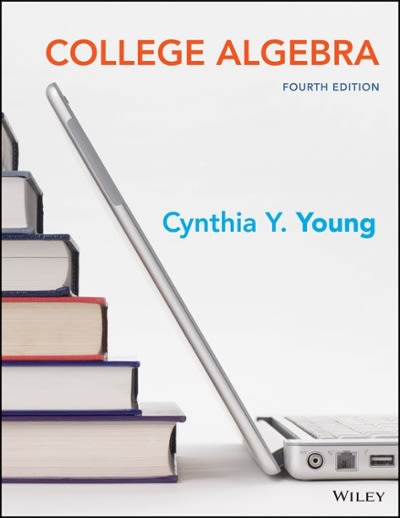Question
07.07(2) Sophia, a mixed martial arts instructor at Fight for Fit, is interested in comparing levels of physical fitness of students attending a nearby community
07.07(2)
Sophia, a mixed martial arts instructor at Fight for Fit, is interested in comparing levels of physical fitness of students attending a nearby community college and those attending a four-year university in town. She selects a random sample of 260 students from the community college. The mean and standard deviation of their fitness scores are 91 and 17, respectively. She also selects a random sample of 260 students from the four-year university. The mean and standard deviation of their fitness scores are 96 and 19, respectively. She then conducts a two-sided t-test that results in a t value of 3.16. Which of the following is an appropriate conclusion from this study when ? = 0.10? (4 points)
Because the sample means only differ by five, the population means are not significantly different.
Because the second group has a larger standard deviation, their mean fitness score is significantly higher.
Because the second group has a larger standard deviation, the mean fitness score of the first group is significantly higher.
Because the p-value is less than ? = 0.10, the mean fitness scores for the two groups of students are significantly different.
Because the p-value is greater than ? = 0.10, the mean fitness scores for the two groups of students are not significantly different.
A student working on a report about scientists decides to find the 96% confidence interval for the difference in mean age at the time of science discovery for Italian scientists versus Spanish scientists. The student determines the ages at the time of science discovery for members of both groups, which include all Italian and Spanish scientists, and uses a calculator to find the 96% confidence interval based on the t distribution. Why is this procedure not appropriate in this context? (4 points)
The entire population is measured in both cases, so the actual difference in means can be computed and a confidence interval should not be used.
The sample sizes for the two groups are not equal.
Age at the time of science discovery occurs at different intervals in the two countries, so the distribution of ages cannot be the same.
Age at the time of science discovery is likely to be skewed rather than bell shaped, so the assumptions for using this confidence interval formula are not valid.
Age at the time of science discovery is likely to have a few large outliers, so the assumption for using this confidence interval formula is not valid.
The manager of a cell phone repair shop wants to compare the mean number of screen repairs in a week for two repair techniques. Eighteen technicians from the shop are selected randomly and each technician is assigned randomly to one of the two techniques. After teaching nine technicians one technique and nine technicians the other technique, the manager records the number of screen repairs each technician performs in one week. Which of the following is the MOST appropriate inferential statistical test in this situation? (5 points)
A one-sample z-test
A paired t-test
A chi-square goodness-of-fit test
A one-sample t-test
A two-sample t-test
Deja is conducting a test on viruses on oak leaves. She uses 8 leaves to compare two strains of a virus. She applies one strain to the left side of the leaf and one strain to the right side. She flips a coin to decide which strain goes on the right side of the leaf. The virus abrasions that appear on each side are counted and she records them in a table.


Step by Step Solution
There are 3 Steps involved in it
Step: 1

Get Instant Access to Expert-Tailored Solutions
See step-by-step solutions with expert insights and AI powered tools for academic success
Step: 2

Step: 3

Ace Your Homework with AI
Get the answers you need in no time with our AI-driven, step-by-step assistance
Get Started


